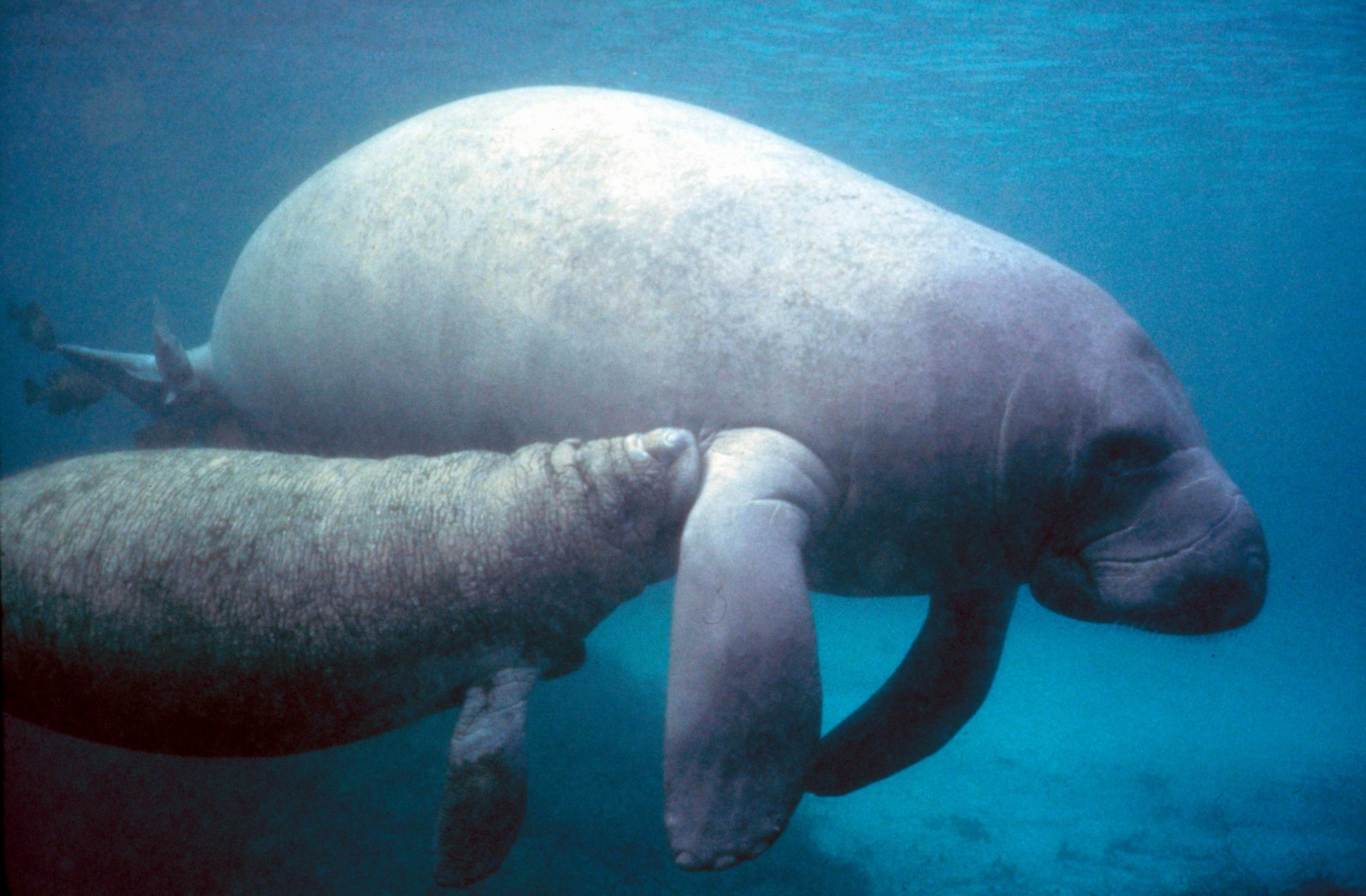Why sequence the manatee genome?
 |
| By Gaylen Rathburn, via Wikimedia Commons |
I was excited to learn today that there is genome sequence for the West Indian manatee (Trichechus manatus)!! A friend wondered why I was so excited, asking, “Is it evolutionarily interesting?”
Well, first off, I’ve always been fascinated with manatees: they are so defenseless, and yet grow so large that they are rarely predated on. They are, however, especially susceptible to human-made water vessels. I am excited for their genome because I’ve always loved them. But, they are also pretty evolutionarily awesome.
1. Manatees are more closely related to elephants than they are to dolphins or whales.
The manatee and the bottlenosed dolphin are approximately 100 million years diverged from each other. The manatee is classified under the Afrotheria, which also includes elephants, hyraxes, and aardvarks, while the dolphin is classified as Laurasiatheria, which also includes the red panda, hippos, horses, rhinoceros, and bears. You can click on the links above for more detailed lists of the species included in each group.
Although about 100 million years separate manatees from dolphins, the manatee and elephant are only separated by about 61 million years. Unlike dolphins, but like elephants, manatees have toenails:
| By Fritz Geller-Grimm, via Wikimedia Commons |
2. Manatees convergently (independently) evolved the ability to live under water
Unlike other mammals that live primarily in the water (whales and dolphins), the manatee (and dugong) does not breath air through a blowhole on top of its head. Instead, manatees breath through their nostrils. How cool is that?
.jpg) |
| By Rusty Clark from Merrit Island FL via Wikimedia Commons |
Additionally, manatees independently evolved flippers and wide tails.
Manatees also convergently lost most of their hair (although this isn’t unique to water-dwelling mammals as many terrestrial mammals lost most of their hair too, including pigs, naked mole rats, and humans). I wonder whether similar genes are involved (disrupted?) to result in the loss of hair across these mammals?
3. Manatees have a much lower metabolic rate than expected for their body mass.
Manatees are fairly sedentary, and have a low metabolic rate (0.36 times the predicted rate for placental mammals). Dolphins have a much higher metabolic rate, but a similar expected lifespan as manatees (approximately 50-60 years, to my understanding). So, it will be fascinating to investigate how genomes differ between fspecies with similar generation times, but very different metabolic rates.
